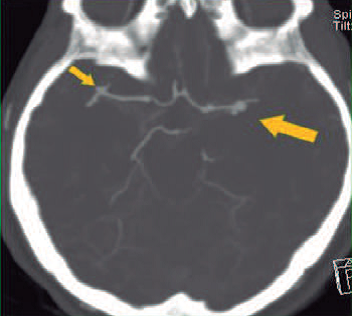Usted está aquí
Peruvian Journal of Neurosurgery
Management of multiple intracranial aneurysms
ABSTRACT
Multiple intracranial aneurysms (AIM) are relatively common, occurring in approximately 23% of all patients with aneurysms. The risk factors include female gender, hypertension, smoking and family history possibly intracranial aneurysms or cerebrovascular disease. The ruptured aneurysm location can be determined with a high accuracy rate with digital angiography when used in conjunction with computed tomography (CT) and magnetic resonance (MR). The average breakdown of untreated multiple aneurysms is between 1 and 2.2%. The critical size associated with significant risk of bleeding was 7 mm. Multiple aneurysms occur most often along the internal carotid artery (ICA) and the bifurcation of the middle cerebral artery (MCA). After bleeding is of any of the aneurysms, you must diagnose what was it bled, and which should be the first to be clipped, this is important especially when all aneurysms can not be clipped with a single approach. Most multiple intracranial aneurysms of the anterior circulation can be clipped by fronto-temporo-sphenoid approach; inclusive aneurysms on the contralateral side.Also, the development of new endovascular techniques (use of hidrocoils, bioactive coils, onyx, remodeling techniques with balloon or stent aneurysm single or double), permit more satisfactory treatments, including combining both techniques.
Conclusion: Multimodal approaches combining microsurgical and endovascular treatment, have been used successfully in cases of multiple cerebral aneurysms.



